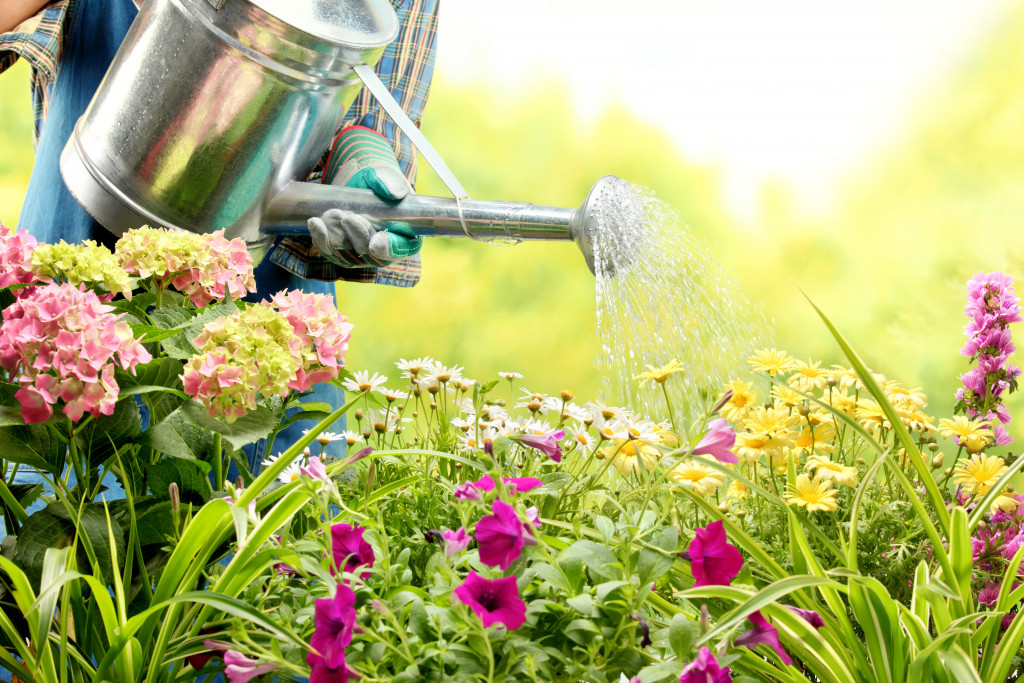After the rush of spring and peak of summer’s harvest, it can be tempting to leave your garden and let nature do its job. However, you’ll be wasting all your hard work for nothing if you do that. That’s why it’s best to take advantage of the fall season and prepare your garden for the upcoming colder months.
With that in mind, here are seven ways you can prepare your garden and plants for the upcoming colder and winter months.
Secure Your Gardening Tools
Although most homeowners know that they need to keep their tools clean and well-kept throughout the year, it can be challenging to do this during busy springtime and summer. That’s why early fall is the best time to secure your gardening tools. Firstly, if you have sprinklers, make sure to shut off the water supply to the irrigation systems to prevent the sprinkler heads from freezing and wrap them around with foam insulation tape or plastic bags.
Plus, if you’re planning on getting sprinkler installations, it’s best to postpone it till spring to avoid any complications during winter. For your manual gardening tools, make sure to wash, oil, and sharpen them to condition them next spring.
Clean Up Rotting Plants
Besides leaving an unappealing look to your garden, old plants can harbor several fungi, pests, and diseases—making it detrimental to the health of your other plants, pets, and family members. That’s why it’s best to clean up rotting or dead plants before you lock in your garden for the winter months. You can either throw them away or bury them in your garden to enrich the soil. However, make sure it’s disease-free.
Remove Invasive Weeds
Invasive weeds are common in berry plants, so if you have any blackberries or raspberries patches, now’s the time to deal with them and look for any invasive weeds. After spotting them, you can dig them up and put them in the trash or burn them on your autumn burn pile. That’s because if you place them in your compost heap or a ‘weed pile,’ they can still strive and grow. So, it’s best to shift them to another part of your garden or altogether remove them.
Prepare Your Soil
Although most people leave this activity for springtime, early fall, just before winter strikes is the best time to dig in soil amendments, such as manure, compost, bone meal, rock phosphate, and kelp. Doing this helps you add nutrients to your soil efficiently, allowing it to become biologically active and enriched. Plus, it means you don’t need to wait until your garden dries out in the spring.
Similarly, a fall tilling can help improve drainage before freezing weather affects your city or town if you till your soil. After adding the soil amendments in the fall, you can cover your garden beds with plastic sheets or other coverings to prevent winter rain from washing them below the active root zone, mostly if you have raised garden beds. You can remove the covers in early spring and lightly till it using a garden hoe.
Plant Cover Crops
The best time to plant cover crops like vetch, clover, and rye are during early fall, allowing you to prevent soil erosion and break up any compacted areas, increasing organic matter in your garden beds for the upcoming winter months. Additionally, they can also add nutrients to your plants during the colder season, keeping them healthy and thriving.
Replenish the Mulch

During the colder months, mulching has as many benefits as when you mulch during the summer, including reducing water loss, protecting soil from erosion, and inhibiting weeds. However, winter mulching has its own set of advantages as well, including regulating soil temperature and moisture, allowing the garden soil to ease into the transition from warm to cold.
Harvest and Regenerate Composts
Since the heat of summer and spring is gone for the meantime and nature’s microbes are settling for winter, it can be easy to ignore your compost. However, not harvesting and regenerating your compost can be a missed opportunity in several ways. Firstly, materials composted over the summer and spring have probably finished and are ready to go, allowing you to use them to fertilize and nourish your soil and give it a jumpstart growth for springtime.
Next, cleaning out ‘finished’ composts means you need to make way for another batch, which can be insulated against winter’s cold winds in most areas.
Depending on what’s in your garden, you can prepare your plants and landscape for the colder months—and the tips mentioned can help you achieve a great start.











